I am able to get to know this well specified Canon 110 ED camera and the Minox 110S I wrote about recently thanks to Bob Janes’ generous gift. Bob has posted several informative articles on this 16mm format that are a mine of information and which have been very useful along the way as I have explored these intriguing little cameras.
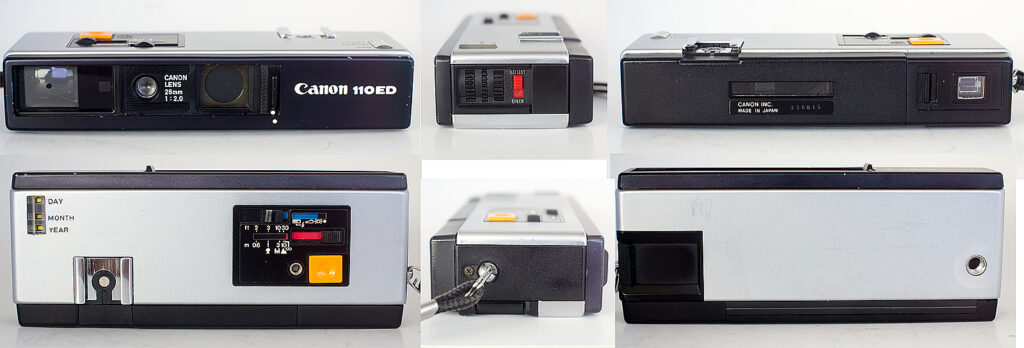
The camera
Introduced in 1975, the 110 ED was aimed at discerning photographers who required better quality results from this new system than most early 110s offered, being basically designed as they were for point and shoot use requiring little or no photographic knowledge. Most manufacturers did, however, produce some advanced models for this segment of the market once it took hold, Kodak included.
The camera is designed around a high quality, 5-element, f2 lens with rangefinder focus and aperture priority exposure control with an optional date imprinting feature. The whole is enclosed in a quite heavy, solidly made body with controls well placed for easy operation taking the easy loading 110 cartridges. A sliding, two part cover protects the lens, finder and meter cell and must be fully open before the camera will operate.
Film speed is communicated automatically with the camera in Kodak’s system using a long or short ridge on the end of the cartridge. The ridge presses down a sensing lever or pad for slow film or leaves it untouched for fast. On the simplest models this alters the aperture set by any aperture or weather symbol selections offered or the exposure meter if one is fitted.
On its introduction Kodak offered ISO 80 monochrome and ISO 200 colour negative films. Other manufacturers set their film speeds to varying though similar values. In Canon’s case, they rather pragmatically took the easy way out with the 110 ED and didn’t include a sensor at all setting the film speed to ISO 100 whatever film is inserted. A logical solution from a commercial point of view, avoiding the expense and complication of variable film speeds. At the time, it would be a fairly safe arrangement, close to the ideal for monochrome and well within the latitude of the colour negative film most would be using. The Canon 110 ED 20 would have to be introduced later with variable film speed settings when ISO 400 films came on the scene.
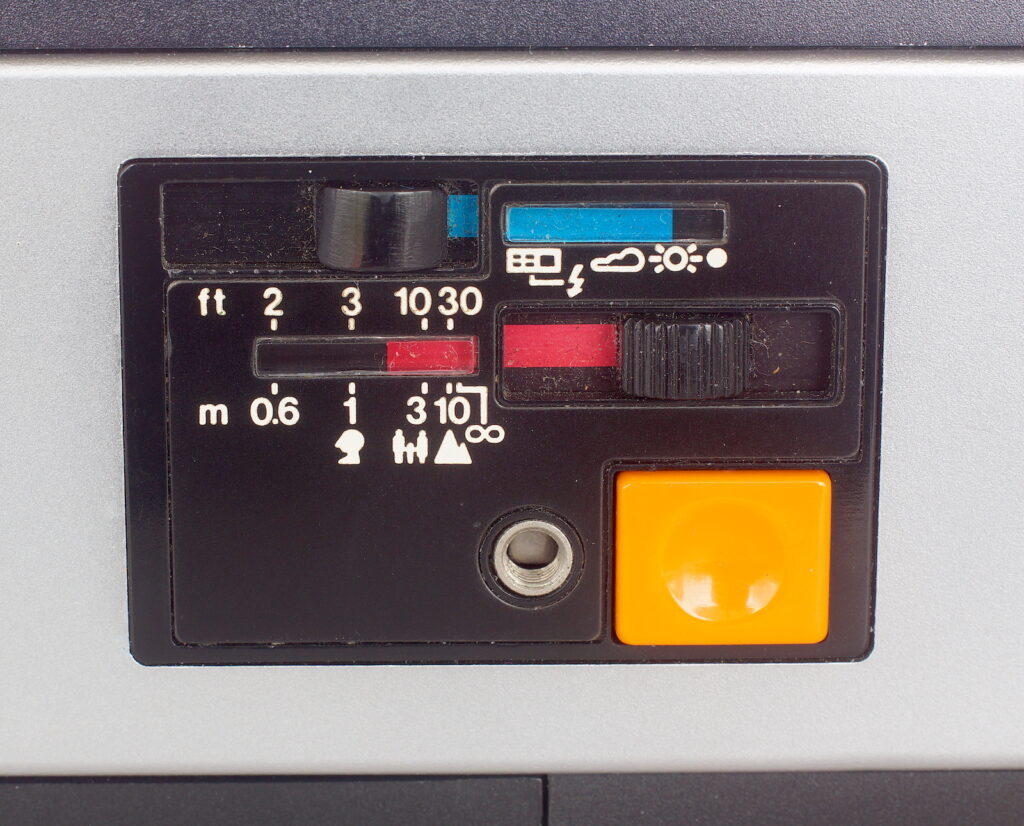
Controls are grouped in a panel that falls naturally under the right fingers with film advance under the right thumb so no change in grip is needed at any point in normal use. The panel contains sliders for focus and aperture, plus the shutter release with a cable release socket alongside. The focus slider is ridged and the exposure slider smooth but click-stopped so both can be identified by touch with the cameras at the eye. A nice design touch.
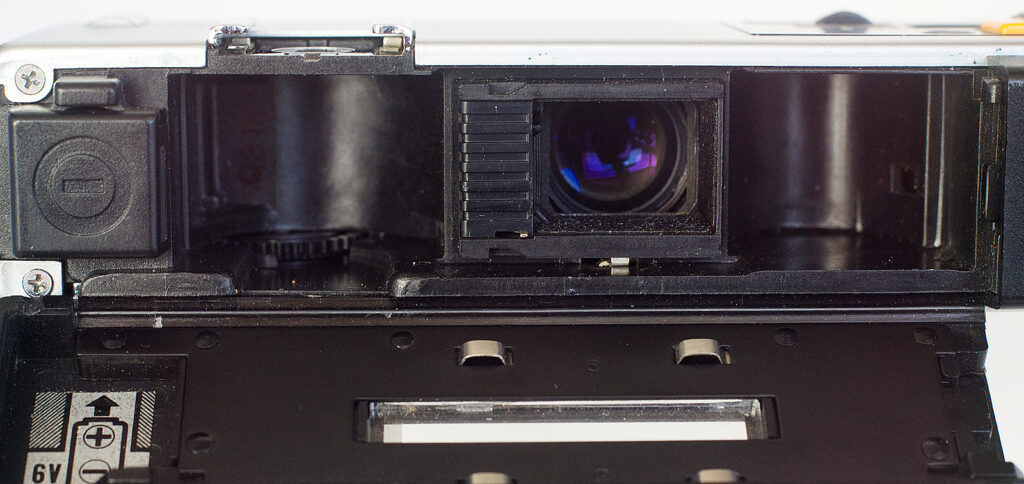
The film door is released with a latch and opens to expose the film chamber, large rear element of the f2 lens and the battery chamber. The battery is a modern, readily obtainable 6v cell housed under a cap which if removed, should the battery die, allows the shutter to operate manually at a fixed 1/125 sec. To remove the battery mid-film, however, would mean the loss of some frames when opening the film chamber door. The film door has no conventional hinges and relies on a full length flexible plastic connection. This works well, if a little stiffly and shows no sign of fatigue in the plastic.
The viewfinder has a suspended frame with parallax markings and warning lights for over or under exposure on either side of the frame lines.
There is a hot shoe for a dedicated flash on the top plate and a tripod thread on the base.
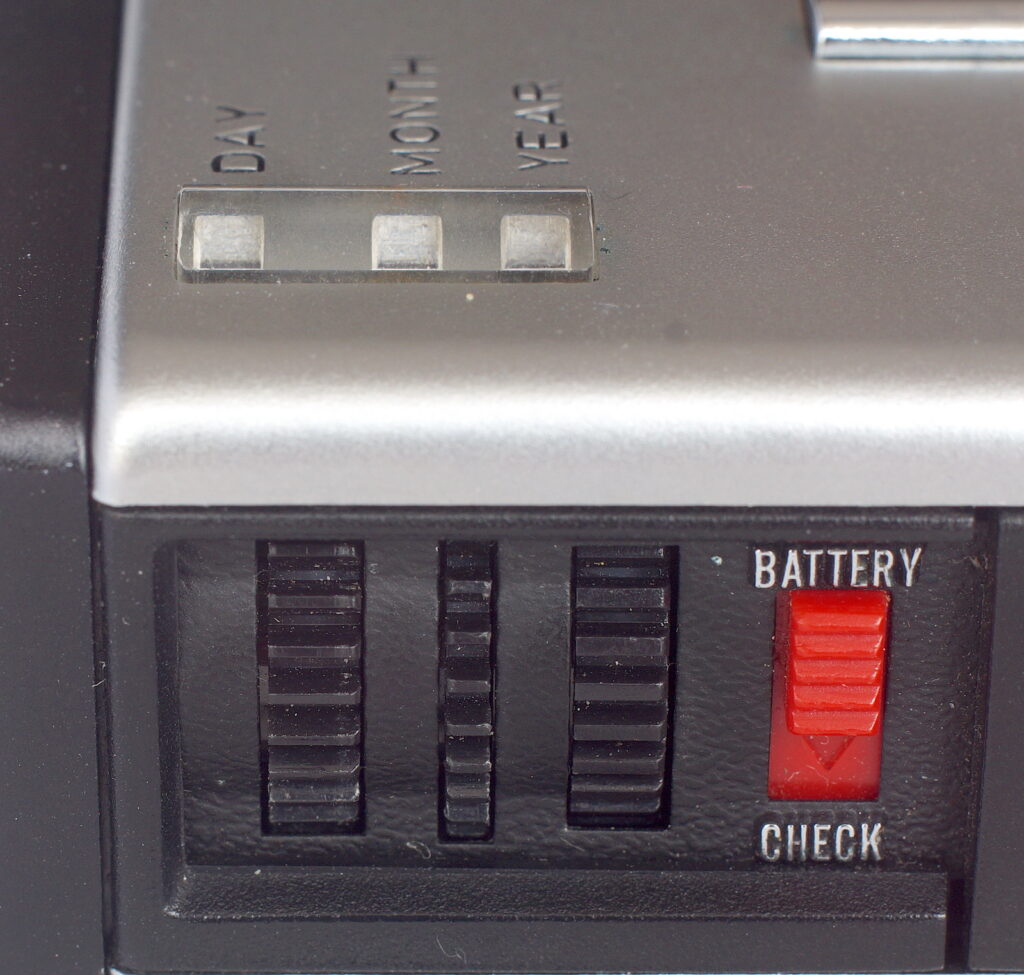
As mentioned, a date imprinting feature is provided, set with wheels in a panel on the left hand end of the body. Any date set is shown on the top plate and also in the finder when the release is pressed or it can be set to blank. Since the years only go from 78 to 88 it has limited value now. Single digits from 0-9 can be set to indicate the year within a decade.
A battery check is provided in the same panel as the date setting controls.
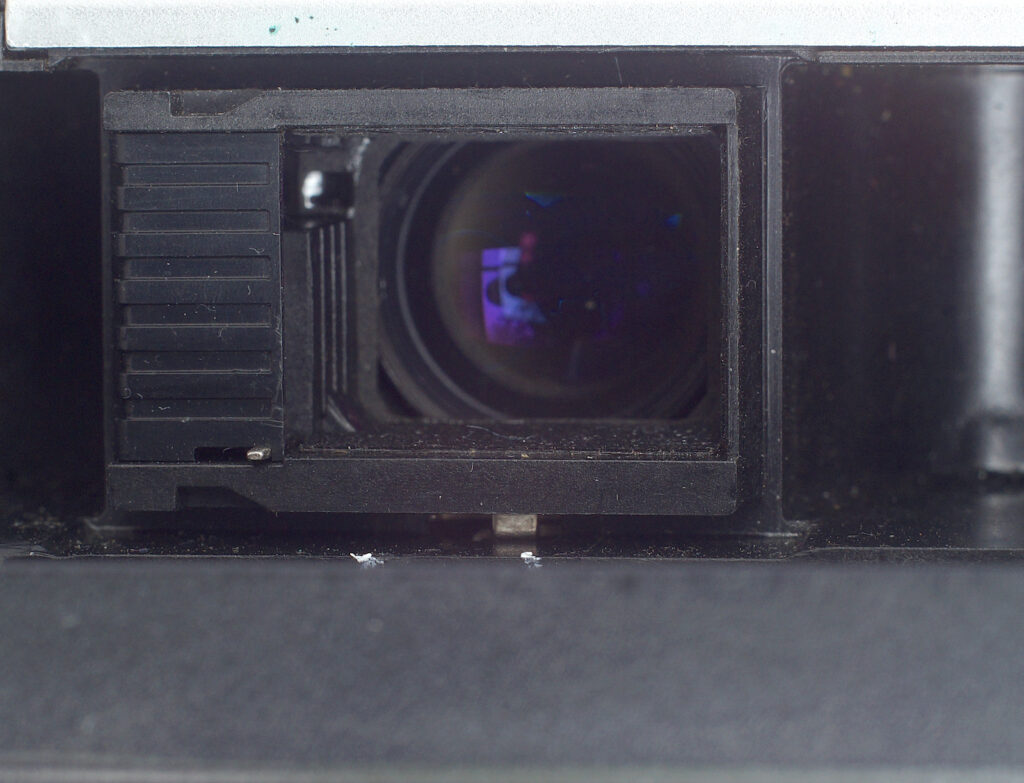
There is a recessed lever located below the bottom edge of the film gate that senses if a cartridge is loaded. This is linked to the shutter and, if the sensor pin in the edge of the film gate has not risen into a film perforation but the cartridge sensor is depressed it will block the shutter release. This will be to prevent premature shutter release and ensure framing lines up with the preprinted frames on 110 film in combination with the sprocket holes.
In Use
One of the standout features of these little cameras for me is the ergonomics. Just as with some TLRs I get frustrated if handling gets in the way of taking photographs. 110 designs generally let you use one grip to shoot, wind on and carry out any other operation allowed for and this model is no exception, e.g. the design of the focus and aperture controls as mentioned.
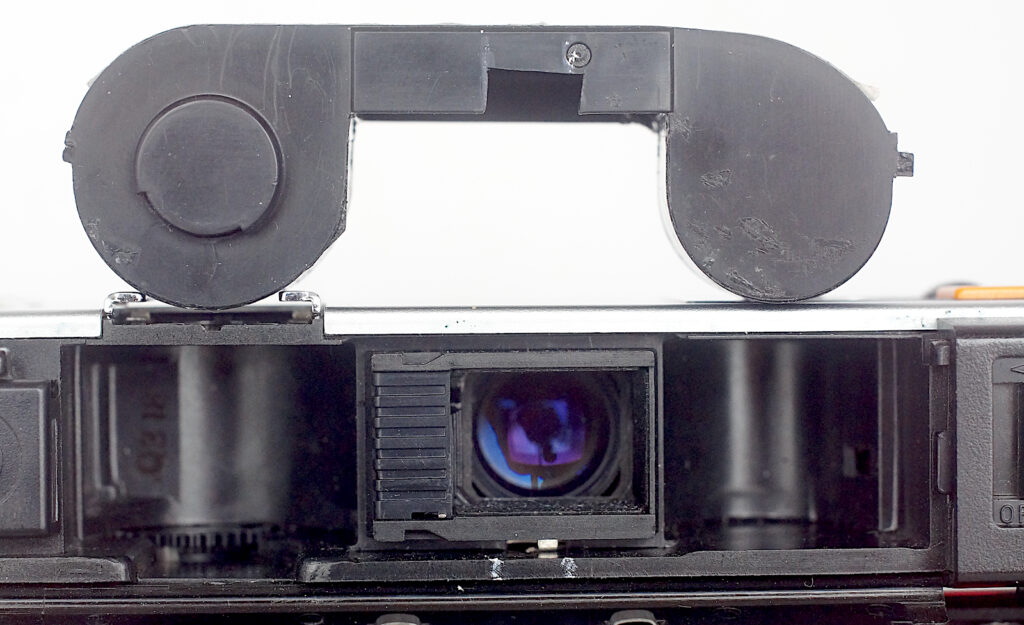
When using unperforated film stripped from larger format rolls the cartridge presence sensor mentioned above has to be bypassed to allow the shutter to fire for some reason even though the spacing pin is always depressed. This is done by cutting a notch out of the cartridge so the sensor is not depressed and while framing is not controlled, one stroke of the advance slider moves the film far enough to avoid any overlap and cocks the shutter which can then be fired. 20 rather than 24 exposures are usually possible.
Shooting is then very straightforward. A black spot has been added to the finder at some time which is visible in the rangefinder square in the finder but doesn’t hinder things and was originally intended to boost the contrast of the rangefinder I gather. Alignment of the eye through the finder seems more important, especially wearing glasses when the eye is further away. I can just see the whole of the frame wearing glasses but not the warning lights.
Results
The first film I put through was a strip from a roll of 120 size Fomapan 400, rated at ISO 100 and processed in 1:50 Rodinal for 7 minutes as recommended by the Massive Development Chart web site (https://www.digitaltruth.com/devchart.php). The film was loaded in a recycled cartridge I was trying out to mimic the method used to load the earlier 16mm cassette, a variation on Bob Janes improved modifications in line with his article. It showed a few light leaks which I tracked down to the frame numbering window letting light strike the joint in the cartridge top, but only in some cases. The solution will be to cover the cartridge window when using unperforated film. Otherwise, the cartridge worked well and was easy to load, as hoped.
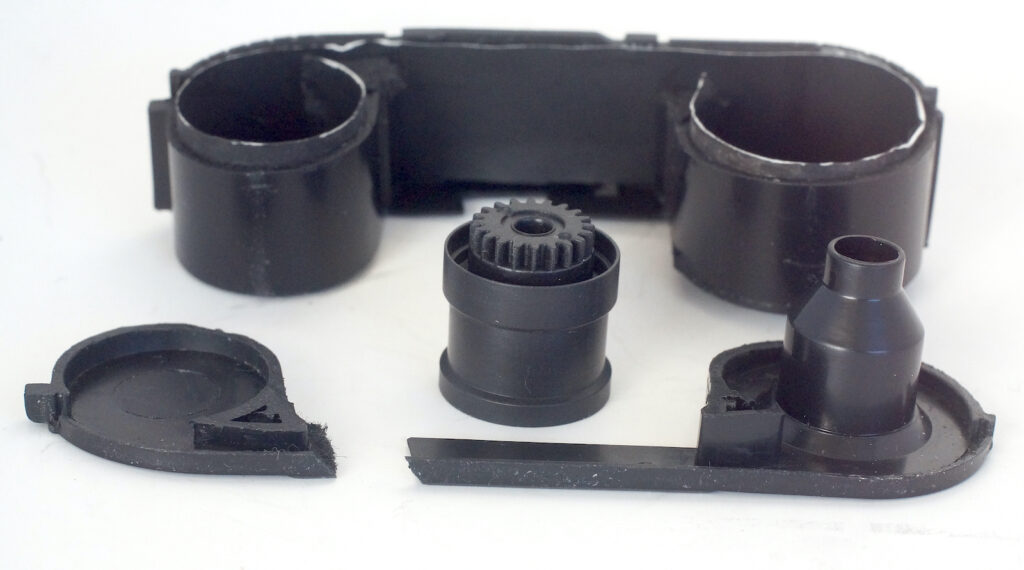
The camera gives an image of 19mm x 13.5mm with strip film loads compared to the commercial image size of 17mm x 13mm showing a little vignetting at the longest distance settings which disappears at any closer setting. I was very impressed with both the quality of the images and the performance of the lens and the exposure meter, which handled some pretty difficult lighting situations surprisingly well. These are a few of the results from that film.
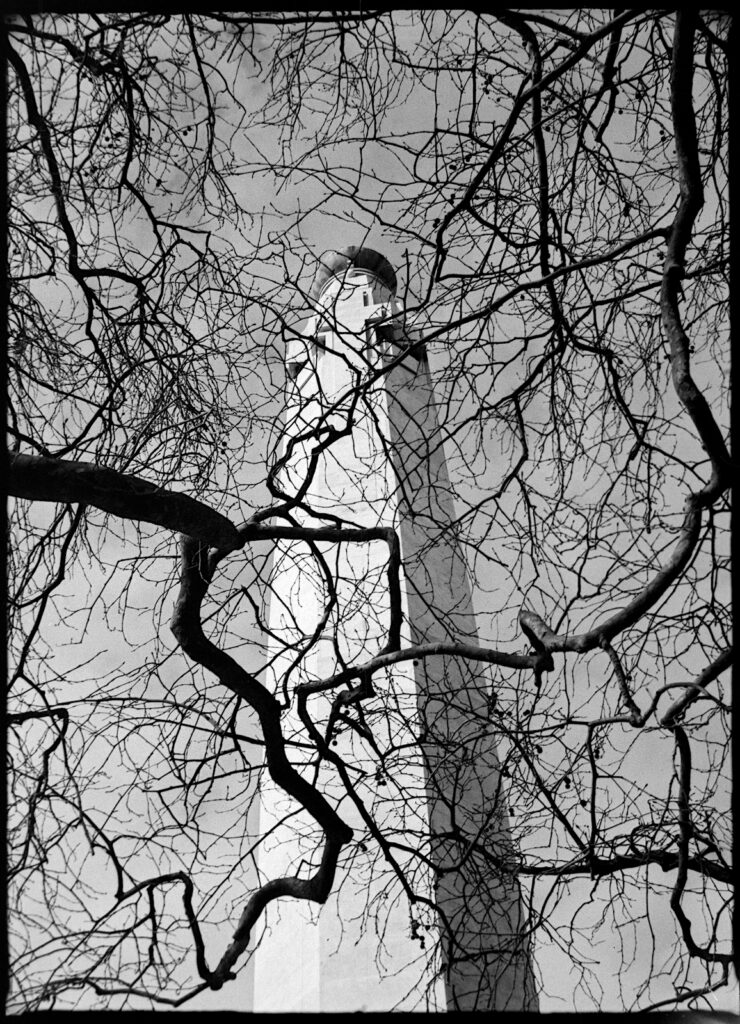
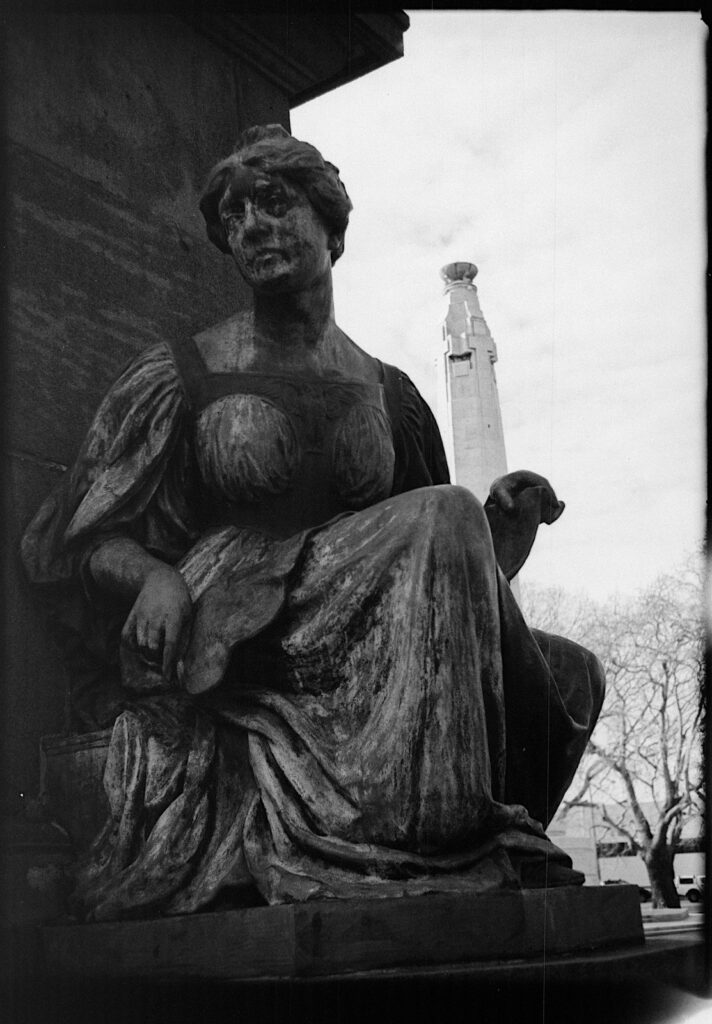
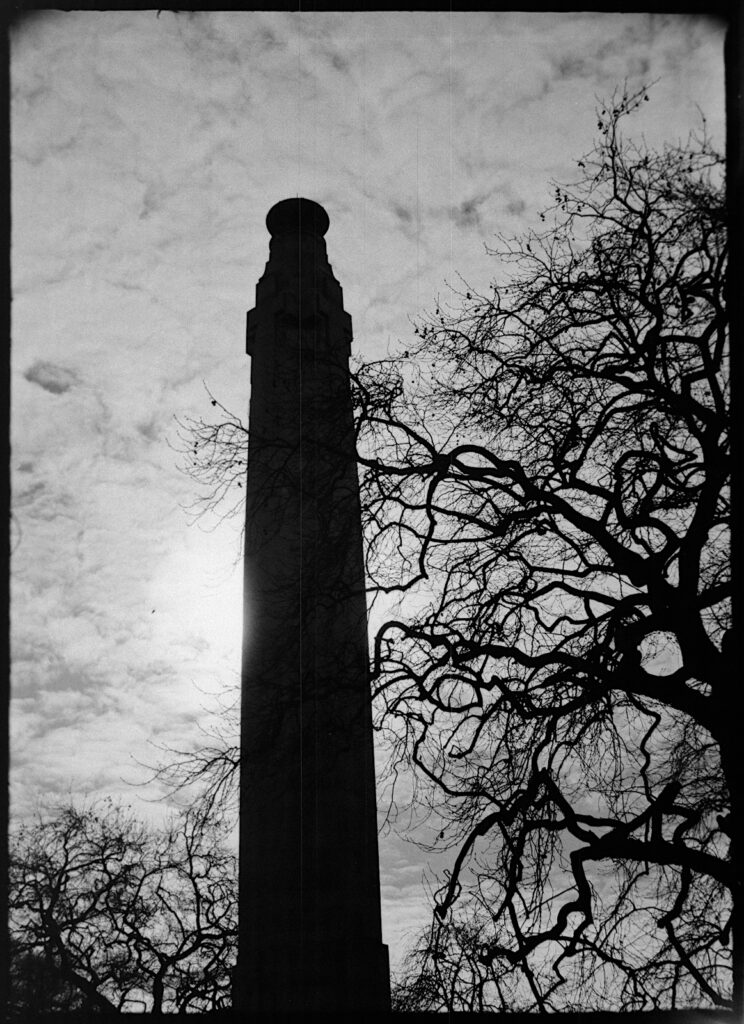
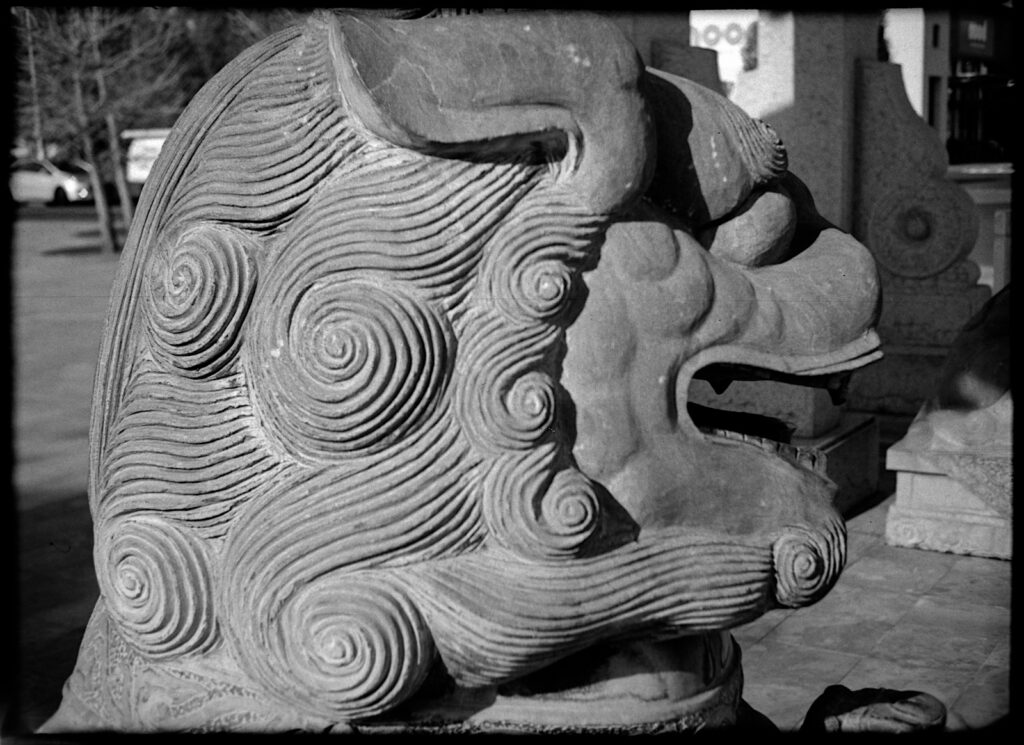
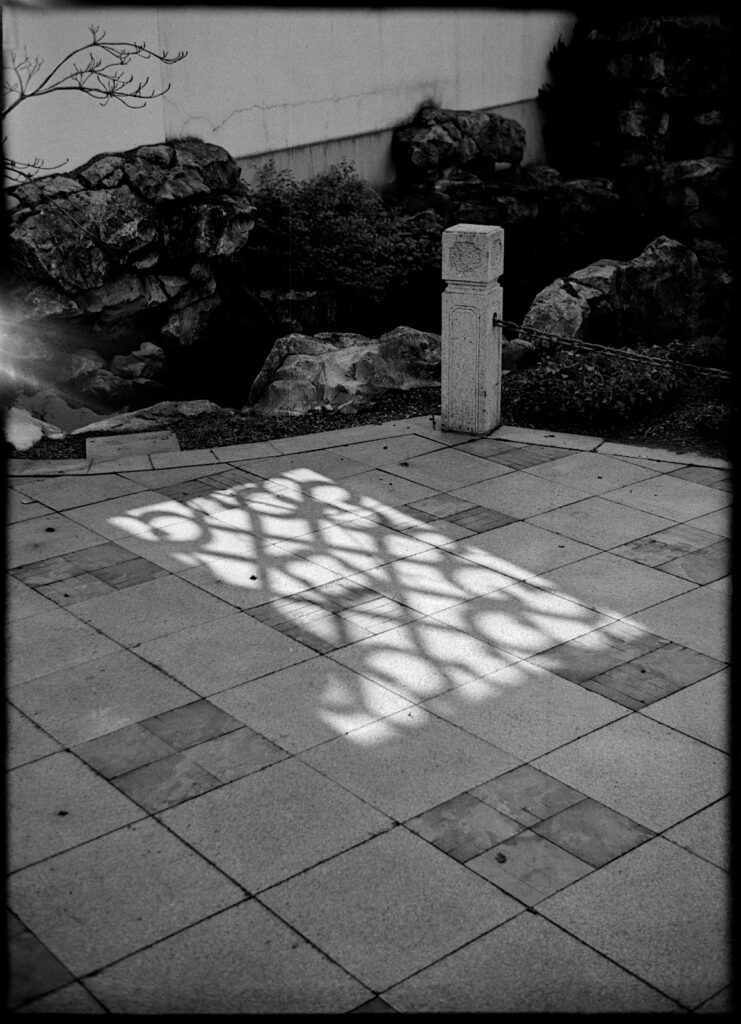
For its second outing, I used Rollei 80S stripped from a 120 roll and loaded into a similar recycled cartridge, taping over the numbering window this time. Processing was at box speed in Rodinal 1:50 and timed following Rollei’s instructions.
Detail
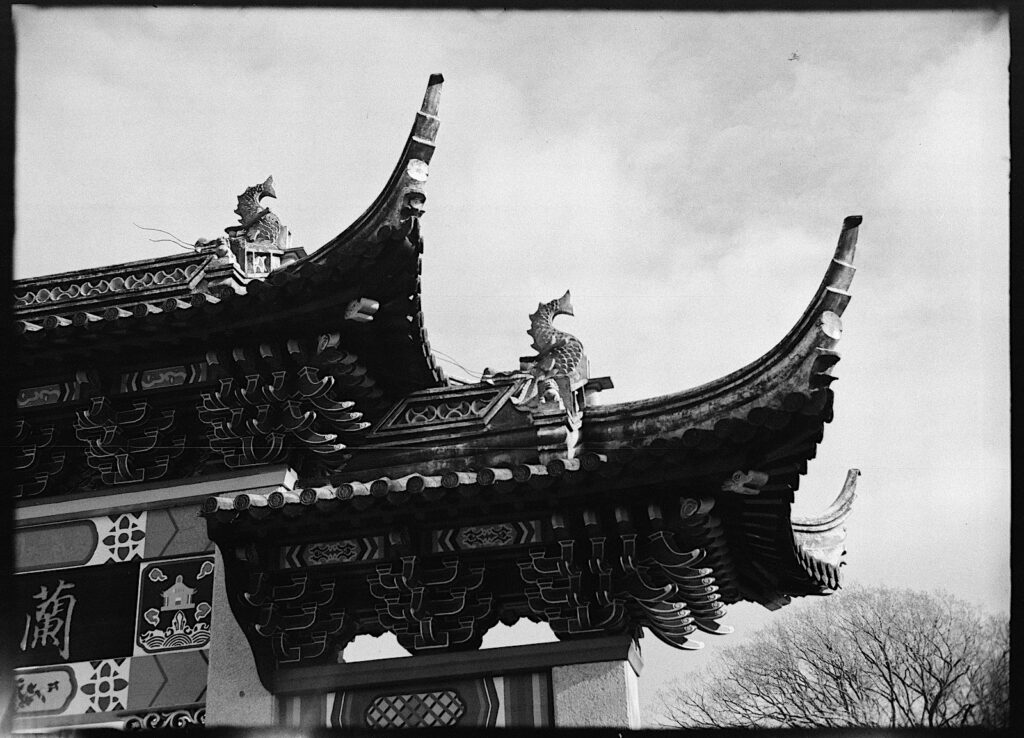
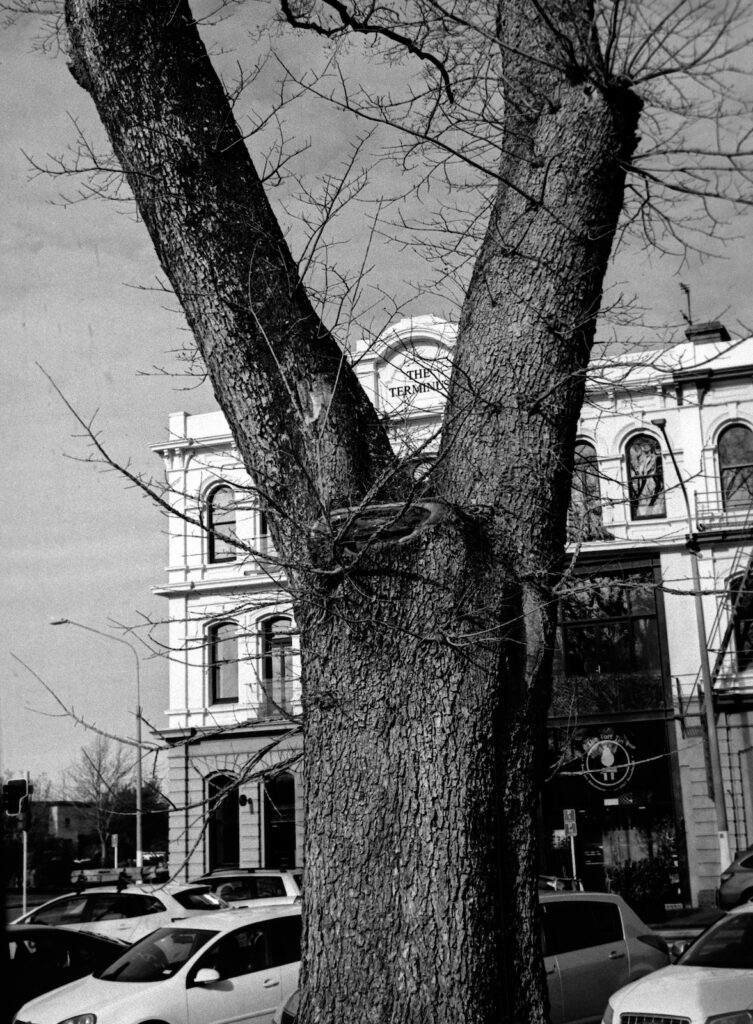
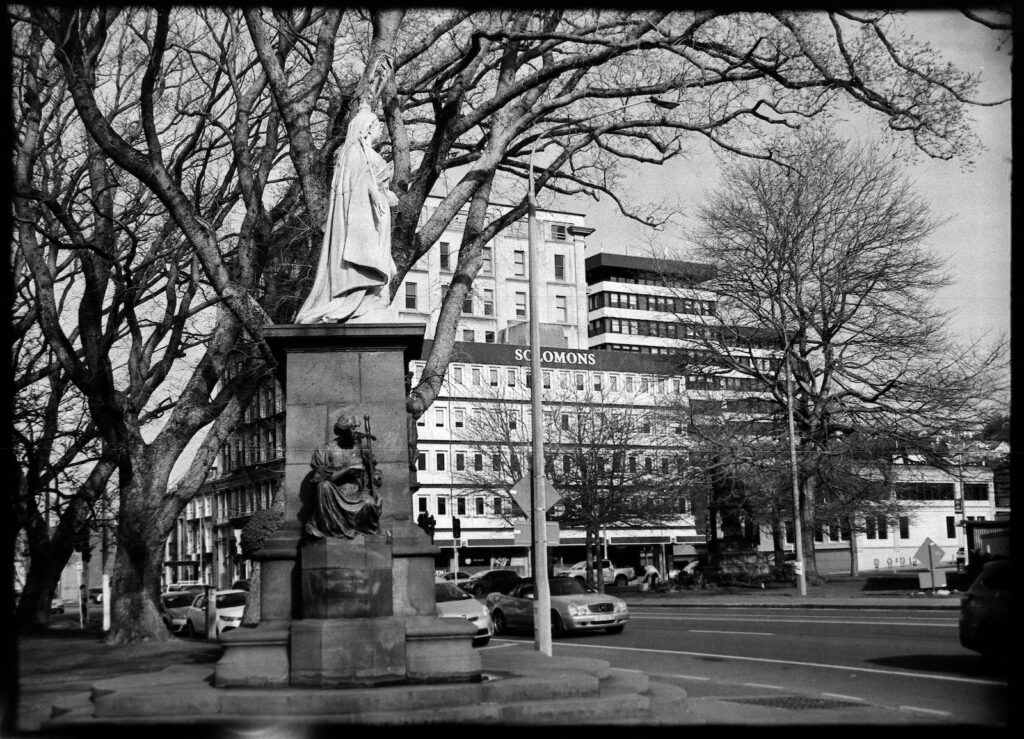
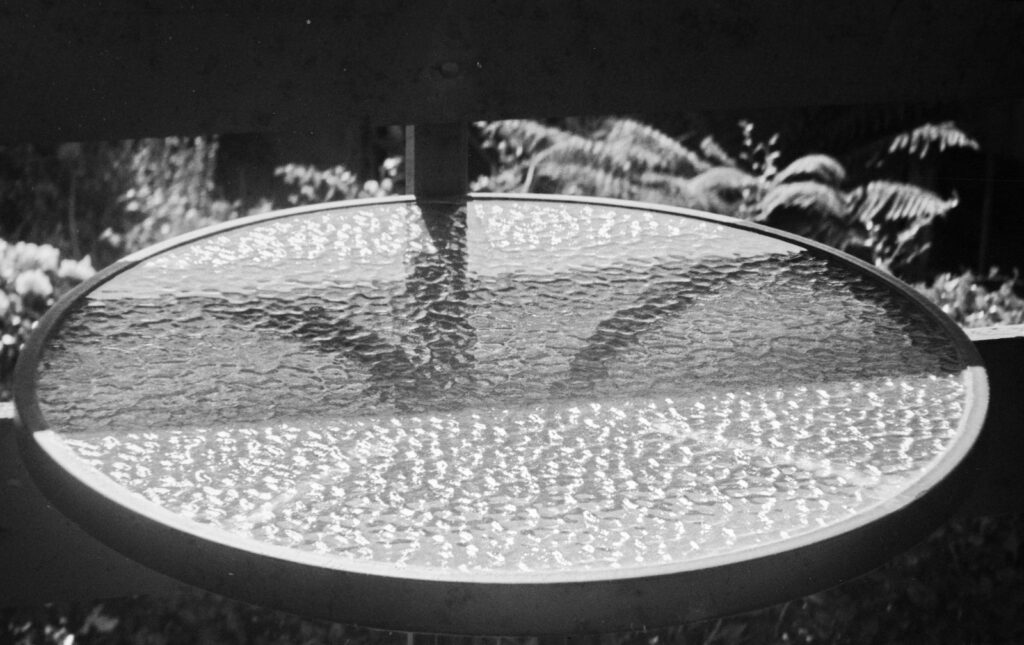
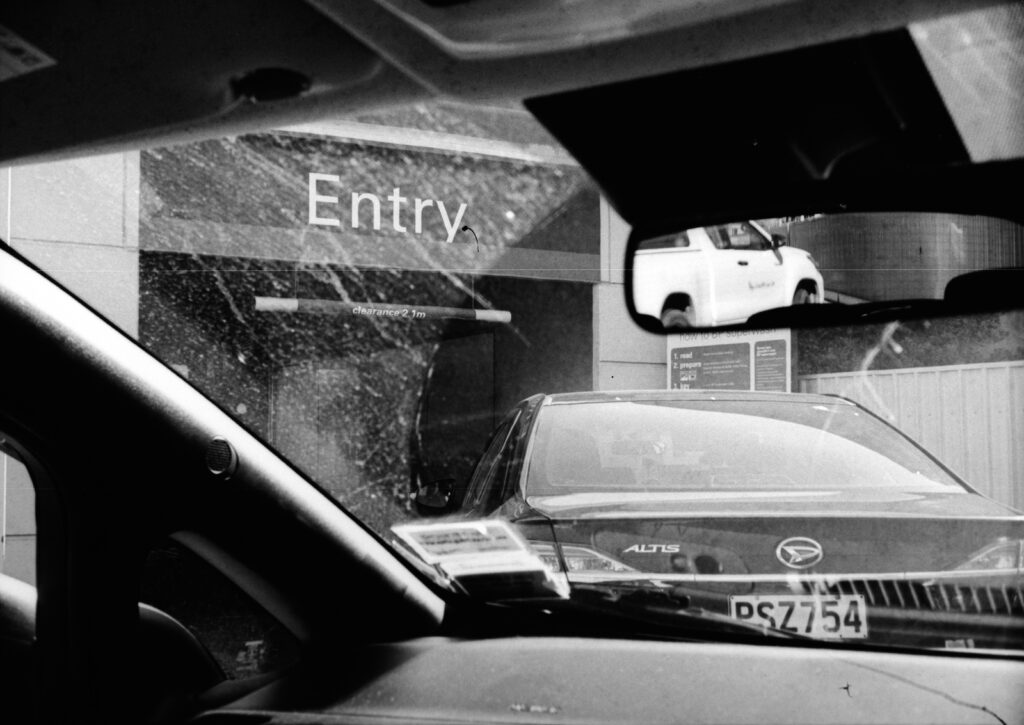
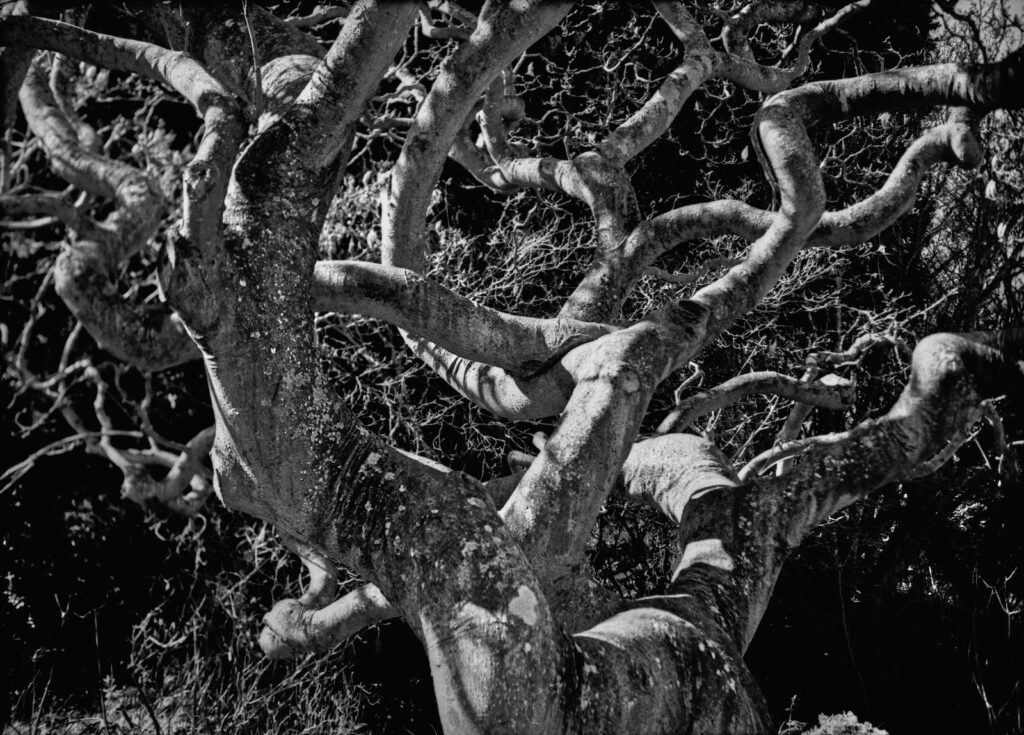
Last words
I hope the examples will speak for themselves with sharp, detailed images taking full advantage of the high performance of the films used. Having used a selection of high end 110 models now, I am impressed by what was produced 50 years ago and by how good modern emulsions have become.
Share this post:

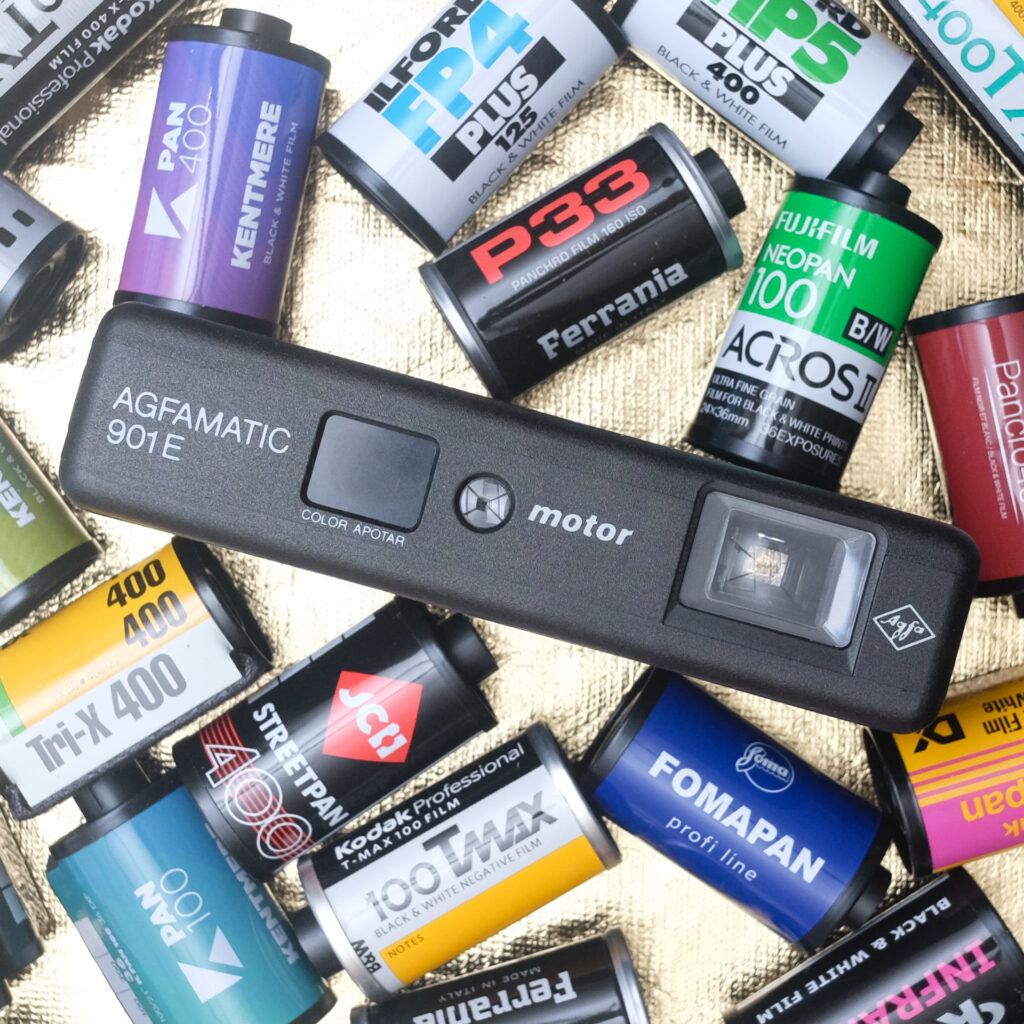
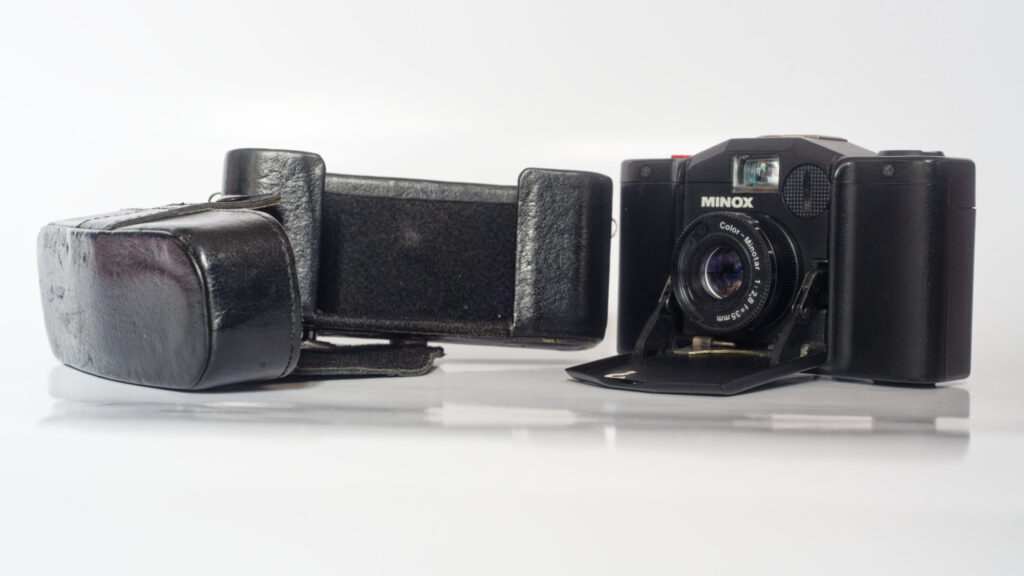
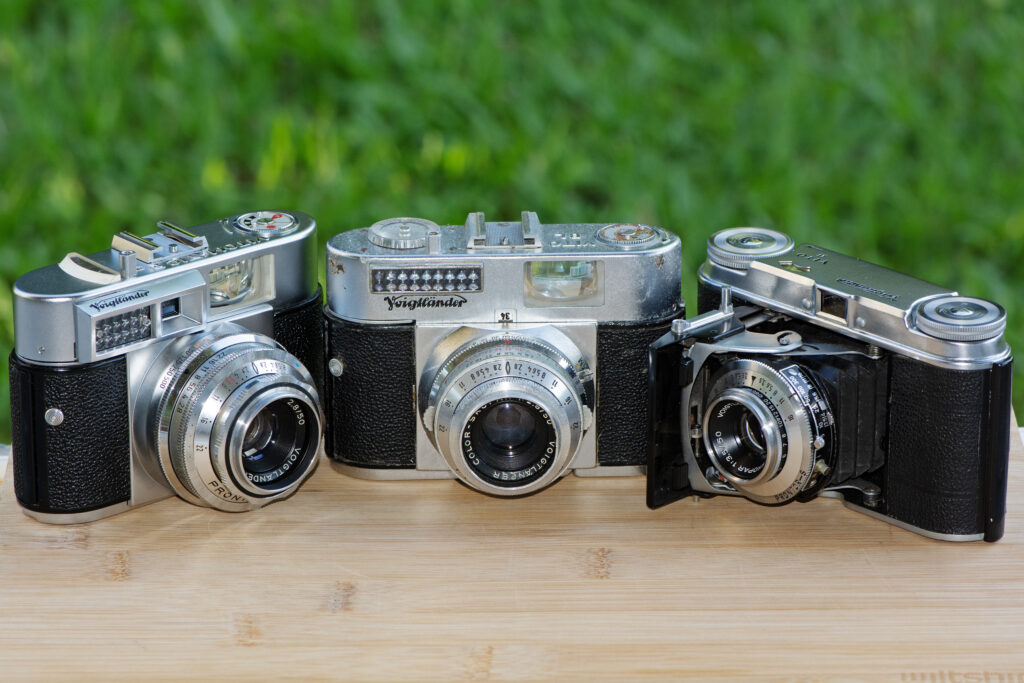
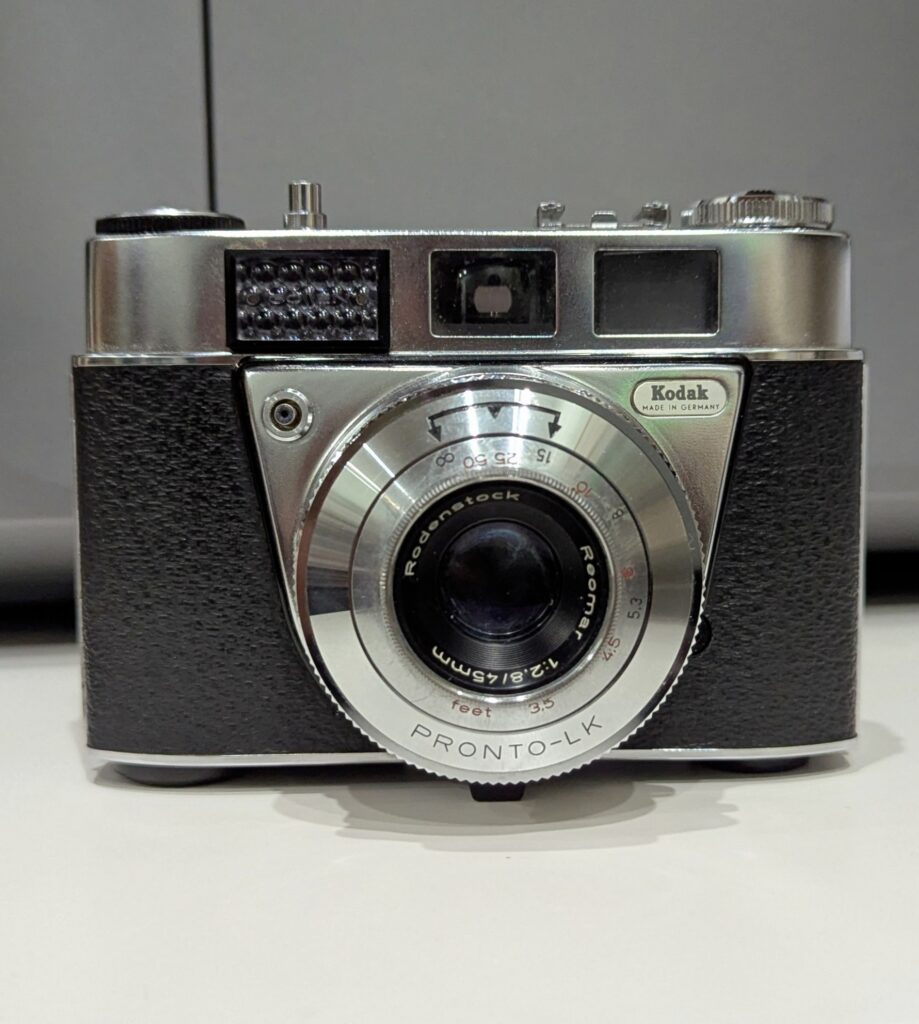




Comments
Gary Smith on Canon 110 ED Review
Comment posted: 23/10/2024
Ought to be more of a challenge than fooling around with 110.
Nice example shots. Seems like work loading a jiggered cartridge.
Comment posted: 23/10/2024
Alexander Seidler on Canon 110 ED Review
Comment posted: 24/10/2024
Comment posted: 24/10/2024
Julian Tanase on Canon 110 ED Review
Comment posted: 24/10/2024
I like and applaud your research into these cameras, Tony; I know it to be a seldom rewarding thing. But when you get there with good results, it is a good feeling, right? Good looking photographs as well, I like these, esp. the Dunedin one.
All the best !
Comment posted: 24/10/2024